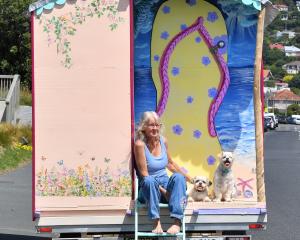The methods used by Dunedin teenagers to get to and from school will be the subject of an intensive study across the city's 12 high schools.
Starting in mid-February, the Built Environment and Active Transport to School (Beats) study will survey the transportation habits of 2000 Dunedin young people, aged 13-18, along with 1000 parents and about 120 teachers.
About 150 pupils from each school will take part.
Research team leader Dr Sandy Mandic, of the University of Otago School of Physical Education, Sport and Exercise, said the online survey would ask wide-ranging questions on everything from how often pupils walked or cycled to school, to whether they felt safe on the roads and their perceptions of ''built environments'' such as cycleways.
The survey would also involve a physical assessment conducted at school by teams led by Beats study co-ordinator Ashley Mountfort.
Volunteers from among pupils and parents would also take part in a physical activity assessment, wearing an accelerometer that would measure levels of activity along with sedentary time.
Dr Mandic believed the findings from the study would provide valuable information for schools, city councils, transport agencies and land planners.
They would also provide a good base-line for comparison in the future, to assess the impact of ongoing changes in Dunedin's built environment - such as the building of extensive cycleway-walkway networks, she said.
Because of its wide-ranging subject matter, the Beats study involved a multi-disciplinary research team, including university researchers Dr John Williams (School of Business), Dr Tony Moore (School of Surveying), Dr Debbie Hopkins (Centre for Sustainability), Dunedin Secondary Schools Partnership manager Gordon Wilson, and Dunedin City Council Safe and Sustainable Travel co-ordinator Charlotte Flaherty.
The research, which will continue until 2015, is funded through research grants from the University of Otago and Dunedin City Council.
''An aspect of the study we [the council] are particularly interested in is the barriers to people participating in active transport - such as a perceived lack of safe cycling facilities,'' Mrs Flaherty said.
''It will be very interesting to see if the work being done on the cycle network changes those perceptions.''
With the lack of physical activity and increase in sedentary lifestyle among adolescents becoming a global health problem, active transport to school was a convenient way to integrate physical activity into everyday life, Dr Mandic said.
''Built environments and how they affect physical activity is a hot topic around the world - there is going to be a lot of interest in our results.''
The survey will start with Logan Park High School, where principal Jane Johnson said there was a sizeable cohort of the school's pupils who chose to walk or cycle to school.












